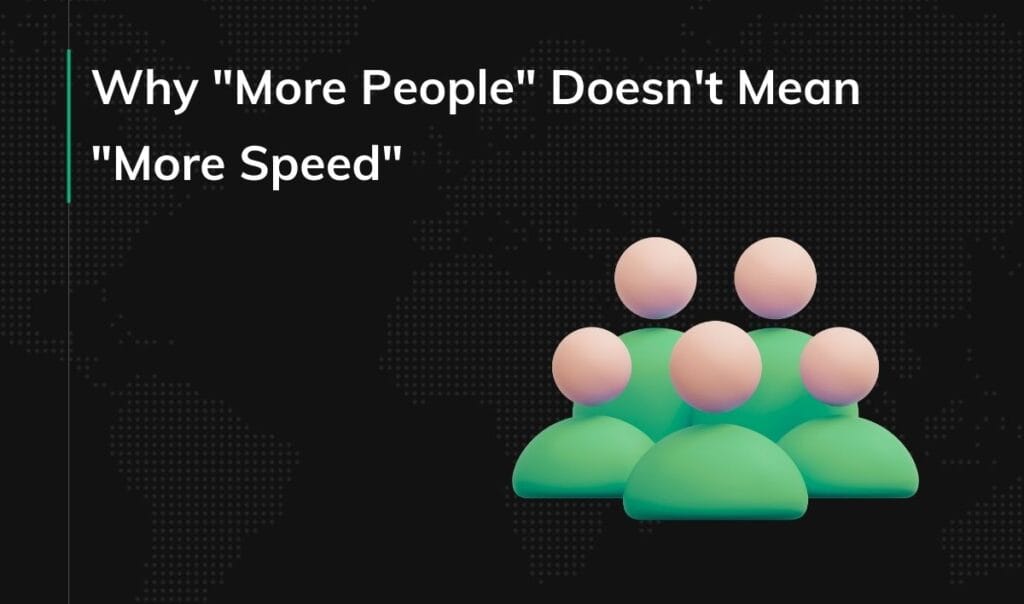How to reduce app development costs?
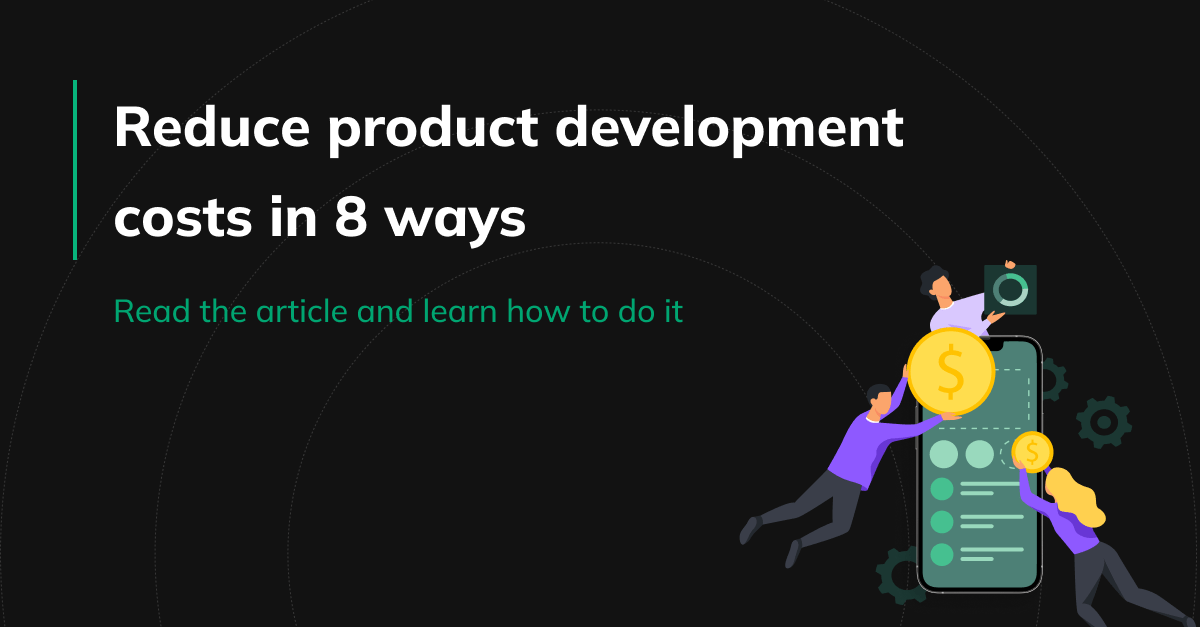
Creating digital products (mobile apps or web apps) is quite a pricey endeavor, so you don’t want unnecessary costs to stop you from reaching the market.
In this article, we won’t discuss technology much (choosing the right tech stack, cross-platform apps, etc.) as these issues are too project-specific.
Instead, I’ll give you
- 5 methods of addressing potential problems early on so that you can minimize the need for costly rework later;
- 3 strategies for making the actual development process cheaper.
Understanding app development costs
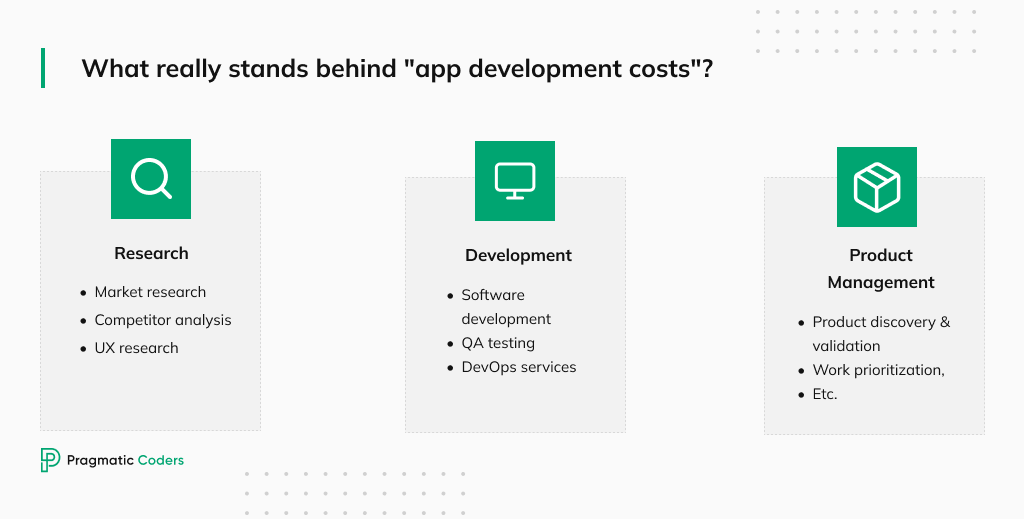
First, let’s break down what stands behind the “app development costs.”
In its most basic form, app development, as the name suggests, is simply developing software. However, we can agree that building digital products just for the sake of doing it makes no sense and wastes your budget.
You want to ensure the app you’re building is something people want to use and can find its niche where your competitors won’t crush it. So secondly, to make a high-quality product, you need research.
Finally, you need somebody to take general care of the product to get it from the idea to the product phase – you need product management.
How much does it cost to develop mobile apps or web apps?
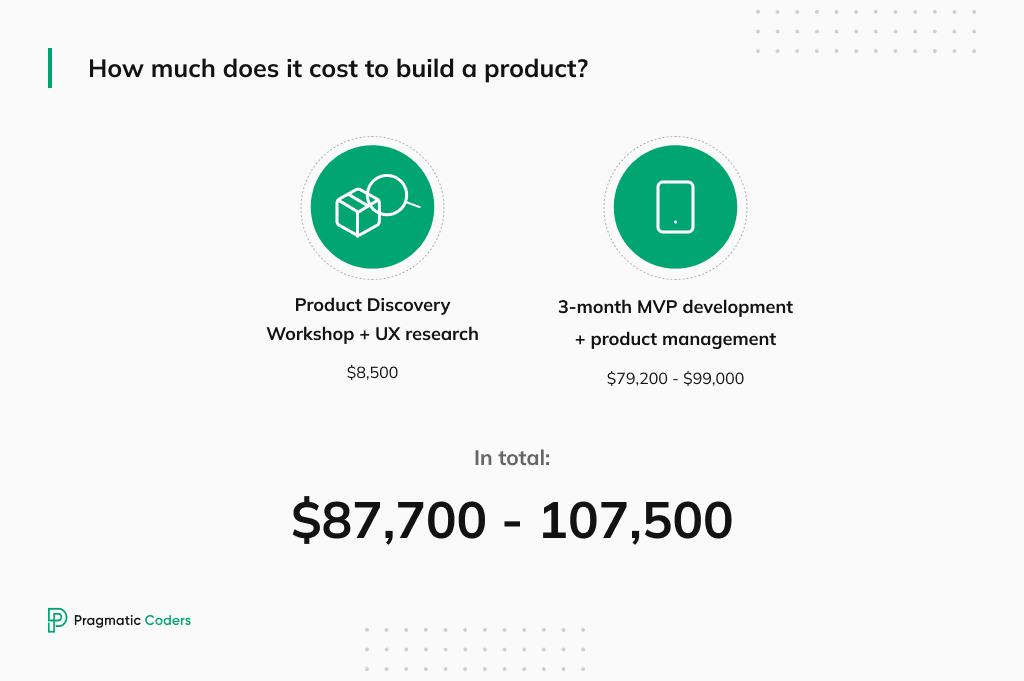
Once we have the costs defined, let’s clarify the app development cost. We’ll do it based on the development process at Pragmatic Coders.
First, we recommend all our clients go through the Product Discovery Workshop with UX research included. Then, we move on to the actual software development process.
If this sounds quite terse, don’t worry – we’ll discuss both phases more thoroughly below. However, if you’d like to jump to the costs right away, check these two articles:
- Product Discovery Workshop: Everything you need to know
- How long and how much does it take to build an MVP in 2023?
How to reduce app development costs?
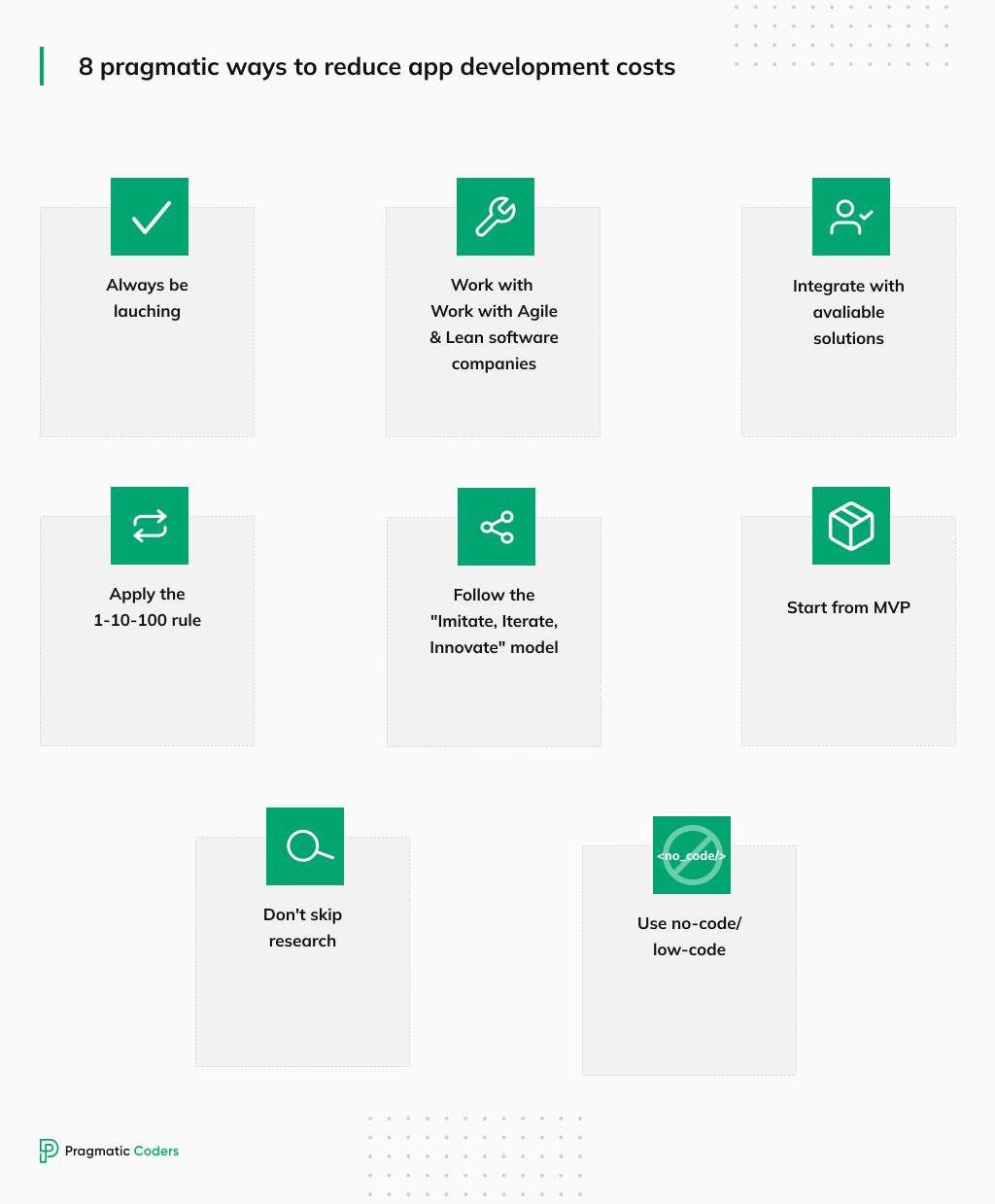
Let’s move on to the 8 ways of reducing app development costs.
Always be launching!
Suppose you have an app idea. You think it’s great, but how can you be sure? You need to ask others for their opinion – and gathering and assessing feedback is the most basic and cheapest method of reducing app development costs.
That’s why launching your product (or “launching your idea”) is so important. By showing it to the potential target audience and asking what they think, you can easily filter good product ideas from the not-so-great ones, ultimately leading to developing only these products that have a chance of succeeding.
“Launching” takes many forms: it can be as easy as asking people on a Facebook group if they would use a product that [here insert the description of your idea] or creating a landing page with a waitlist signup form. But “launching” is also making a clickable prototype to test with potential users and releasing an MVP.
The clue is, in each phase of your business journey, you should test your ideas/products:
- Ask for feedback.
- Improve your product.
- Repeat.
You’ll find more information on gathering user feedback in this article: Always be launching! The greatest fear of every founder.
Work with Agile & Lean software providers
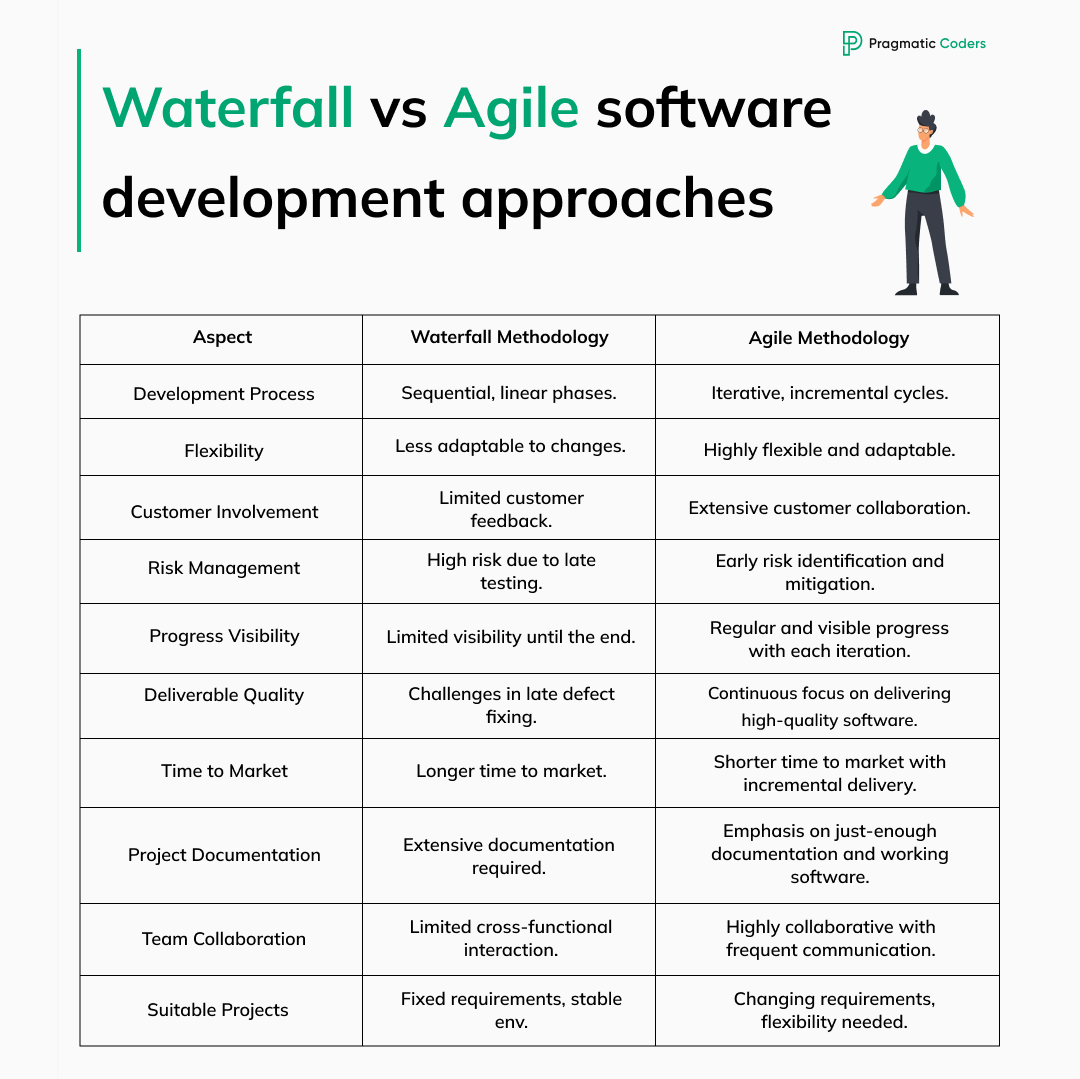
Agile, introduced in 2001, is an iterative and flexible development approach, emphasizing incremental (regularly increasing in value) progress. It’s best for innovative and experimentation projects (=startups), unlike Waterfall – a traditional sequential and rigid methodology with distinct phases more suitable for projects with fixed requirements and minimal changes expected.
We’re not saying Waterfall is wrong, but it’s less effective and prospective. Research confirms it – according to Zippia, Agile projects are nearly 1.5x more successful than waterfall projects. (source)
Apart from Agile, the super duo consists of Lean. This business methodology aims to eliminate waste (anything that doesn’t add value), improve efficiency, and optimize the overall app development process.
Why are Agile and Lean so important? These two approaches embrace flexibility, so whenever you need to change anything in your app development process (because of new competitors, changes in law, user feedback, budget constraints, new discoveries, etc.), you can do it at the lowest cost. If you add AI-assisted software development into the mix, the savings can skyrocket.
Additionally, Lean implies maximum effectiveness, so you can be sure that if your development team uses this methodology, they will work towards delivering valuable (useful and marketable) products within a minimal budget and in record time.
Don’t skip research – especially UX research
Research is the foundation of any venture; without it, the chance of failure grows dramatically.
In case of app development, the 3 types of research you should especially care about are:
With market research, you assess how many people you can realistically target with your product (we’ve got an automated Market Research Tool, by the way). Competitor analysis lets you see what others in your industry are up to and how you can differentiate from them. Finally, with UX research, you get to know those who will ultimately judge whether your business will be a hit or a flop – your apps’ users.
Yes, decent research costs, but it’s an investment that will pay off later because you will be basing your decisions on real data, not just your assumptions.
According to research by Forrester, every dollar invested in UX brings 100 in return – so you don’t want to underestimate it. (source)
Apply the 1-10-100 rule
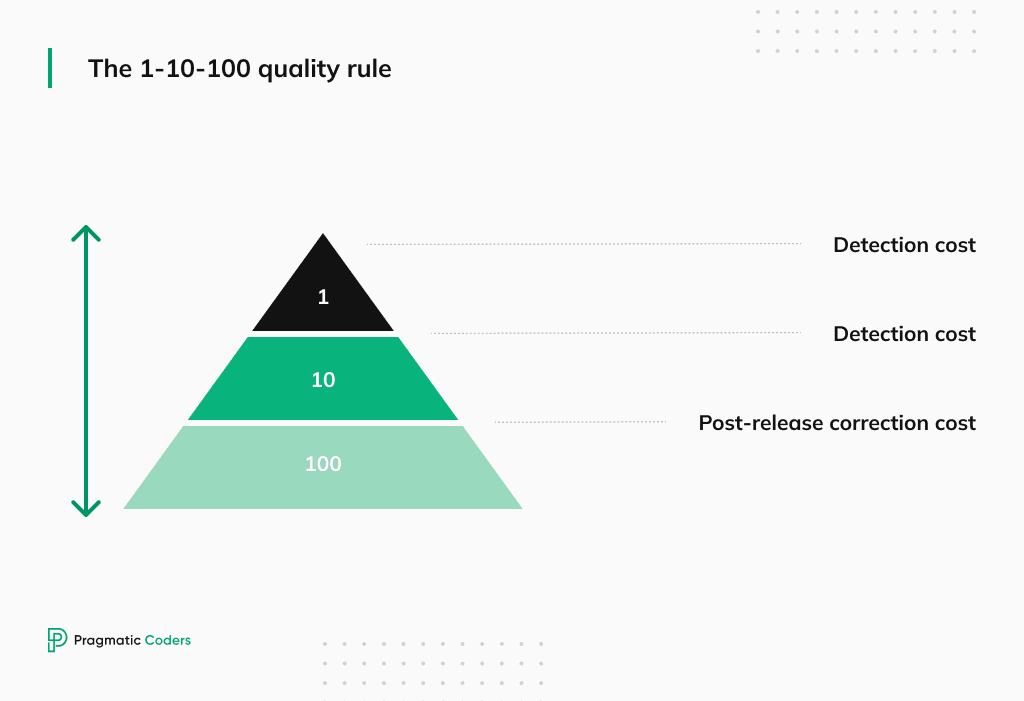
The 1-10-100 quality rule, also known as the “Cost of Quality” rule, states that it is much cheaper to address quality issues at the earliest stages of a project (prevention); it becomes progressively more expensive to fix them during development (detection).
It becomes even costlier to rectify them after the product has been released and reaches users (post-release correction), as it involves not only the direct cost of resolving the problems but also potential damage to the brand’s reputation and customer trust.
You should stick to this rule as early on as possible, especially in these areas:
- Research: Thorough research prevents misunderstandings and misalignments.
- Design: Early UX design and usability testing prevent costly issues.
- Code development: Best coding practices and regular reviews reduce debugging needs.
- Testing and QA: Comprehensive testing detects and addresses issues before release.
- Target audience feedback and iteration: Customer feedback ensures a product that meets expectations.
- Security and compliance: Prevents security breaches and legal issues later.
Imitate, iterate, and then – innovate
In one of TechCrunch+ articles, you could read there’s a marketing tactic for young startups – the Triple I Model. According to it, you should spend most of your time during the first years imitating successful tactics:
Iterating can happen in tandem as you achieve wins from successful imitations, and it should be a constant process to improve metrics. If you do feel you have a groundbreaking idea you’d like to test, go ahead. I’m not saying you shouldn’t innovate. I have done this when consulting for small seed-startups.
What I am saying is that instead of expending so many resources on the uncertainty of innovation, early on there’s so much more for your startup to gain from imitation. There’s no need to constantly reinvent the wheel. Conserve your resources to innovate for high-probability tests that you’re excited to try at various stages of your startup’s life. (source)
This is such a reasonable tactic that you shouldn’t apply it to just marketing but to other aspects of app development, too.
Of course, you need that seed of innovation for your product idea to make it stand out from the crowd. However, when building a product, especially with limited sources, it makes much more sense to go for absolute simplicity wherever you can – for example, in terms of design.
Start from an MVP
A Minimum Viable Product (MVP) is a basic version of a product or service that includes essential features and functionality. It serves as an initial prototype to test the market and gather feedback from potential customers.
MVPs are the perfect compromise between delivering a functional product to users quickly and efficiently while minimizing app development costs and resources.
You have an actual, working product that real users can access (in case of mobile apps – download from app stores, in case of web apps – enter the site) and use, which means you can already monetize it.
On the other hand, your app is small enough so that if it doesn’t achieve desired results, you don’t lose as much money as you would for complete product development. And if it succeeds, you can always build it up.
Let’s look at 2 more practices you and your software partner can implement during the MVP development to reduce costs even more.
Discover quick wins
There’s a smart software development strategy of looking for the so-called “quick wins”. By “quick wins,” we understand options to integrate existing solutions (tools) with your app.
If you’re just starting a business, and you don’t want to commit to developing a complete product “from scratch,” this is one of the best ways to save your money. This way, you’ll provide a fully functional product fast, and you can always build the needed part of your product later.
To see an example of a successful implementation of quick wins, check this case study of a banking application.
Use no-code/low-code solutions
No-code/low-code refers to software development approaches that enable creating applications with minimal or no hand-coding, allowing users to build solutions through visual interfaces and pre-built components. Because of that, they are around 40-60% quicker than regular development (source) and deliberately cheaper.
Building your MVP using no-code or low-code will be a good alternative for regular development if you have a smaller budget or simply don’t want to invest too much in a product to validate an app idea.
Low-code has limitations, but you can build quite complex apps with it – like this medtech mobile app that uses AI to manage medical documentation.
Conclusions. How to reduce app development costs?
Those were the pragmatic 8 ways to reduce app development costs.
A quick note here: outsourcing software development, if done correctly, can also lead to substantial cost reductions.
If you have any more questions regarding cutting development costs for your web or mobile app, don’t hesitate to contact us – we’ll be happy to help!







